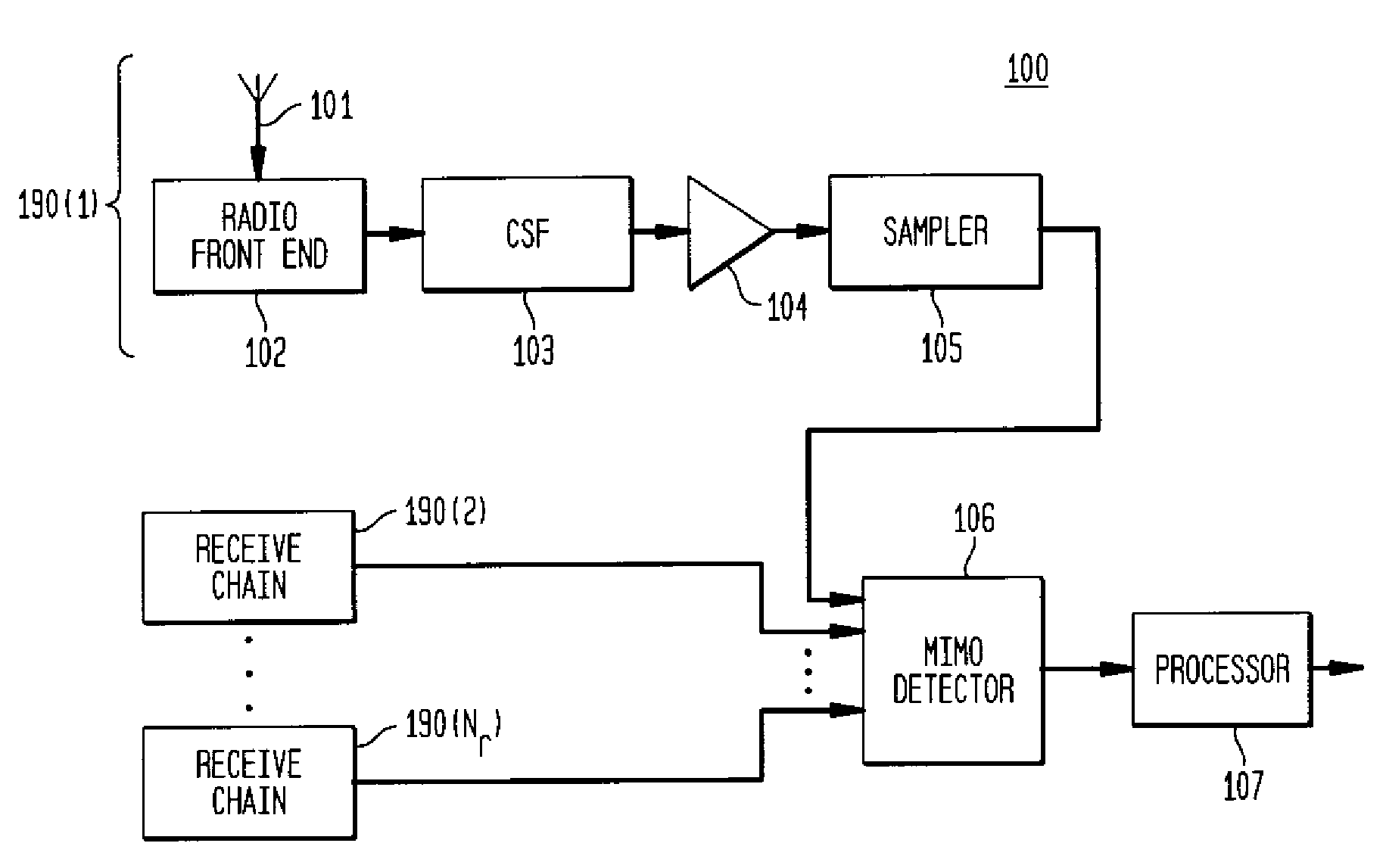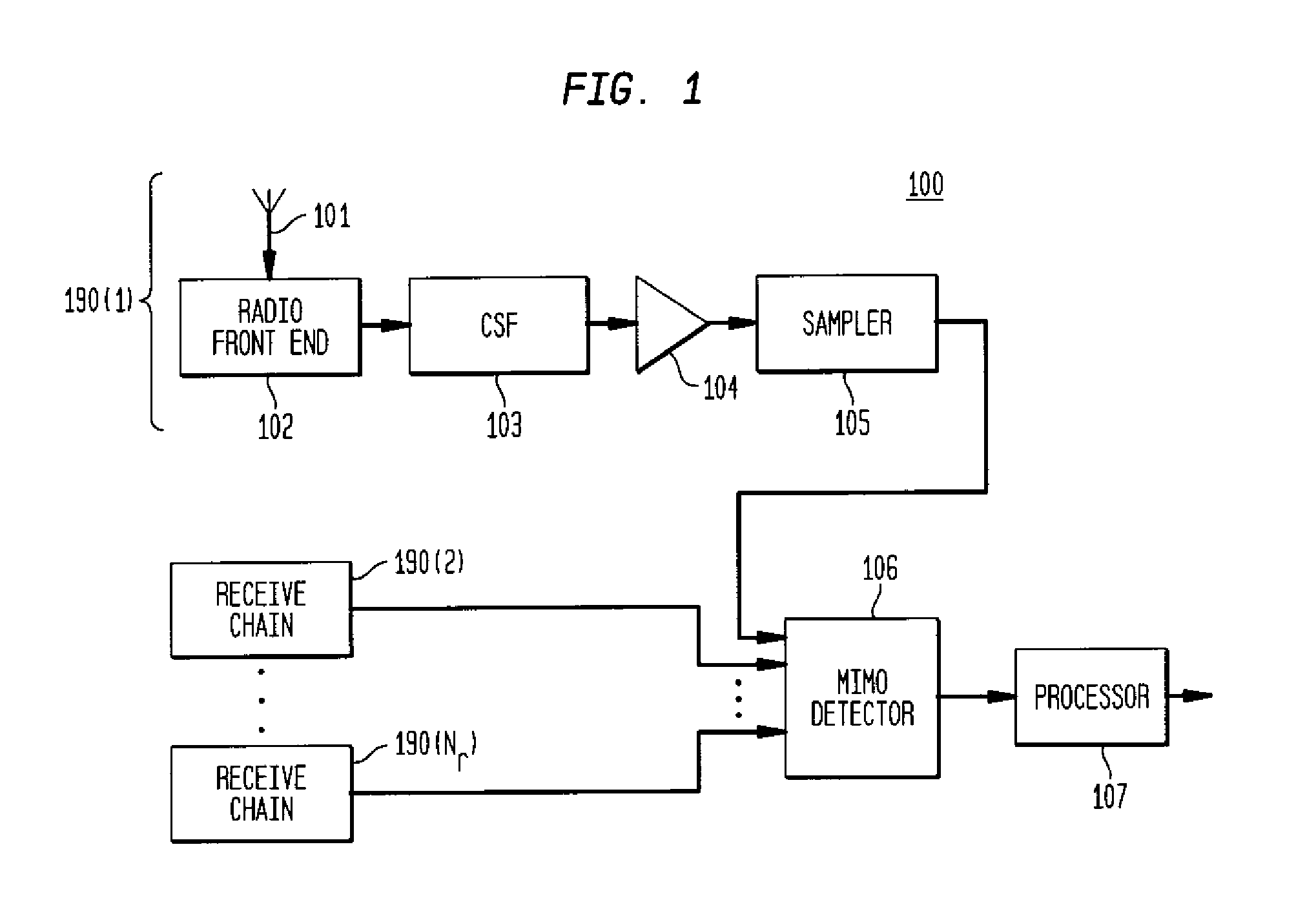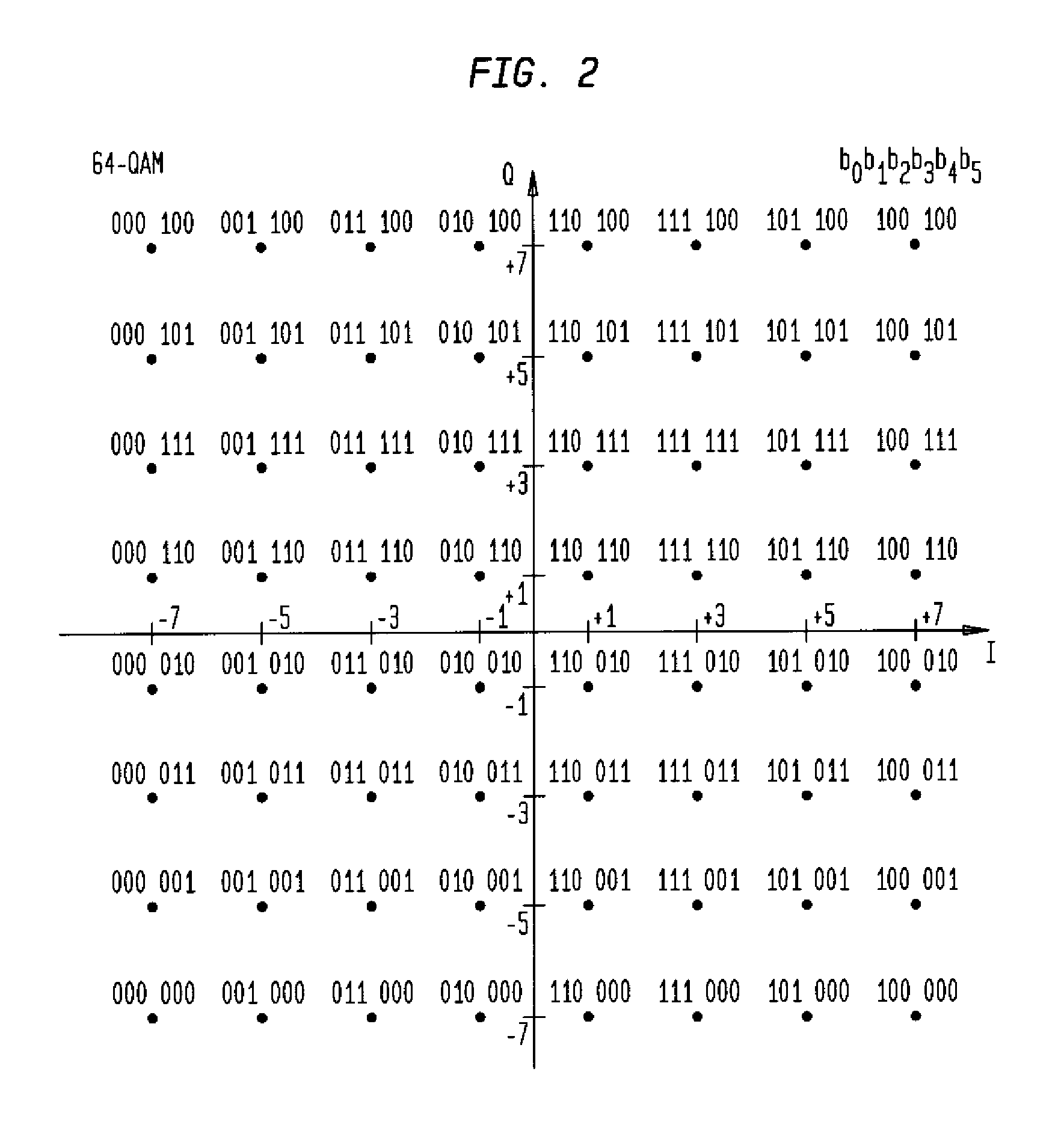Reduced-complexity multiple-input, multiple-output detection
a detection and multi-output technology, applied in the field of communication systems, can solve the problems of sacrificing reliability of mimo demapping, affecting the accuracy of data detection, so as to reduce the set of computations
- Summary
- Abstract
- Description
- Claims
- Application Information
AI Technical Summary
Benefits of technology
Problems solved by technology
Method used
Image
Examples
Embodiment Construction
[0024]FIG. 1 shows a multiple-input, multiple-output (MIMO) receiver 100 operating in accordance with exemplary embodiments of the present invention. Receiver 100 comprises Nr receive chains 190(1) through 190(Nr), where Nr is a positive. Typically, a MIMO receiver comprises two or more receive chains, where each receive chain might operate in a similar manner.
[0025]Receive chain 190(1) comprises antenna 101, radio front end (RFE) 102, channel selection filter (CSF) 103, programmable gain amplifier (PGA) 104, and sampler 105. Antenna 101 detects a signal from, for example, a wireless communication channel, where the signal might comprise two or more antenna signals generated by a MIMO transmitter. RFE 102 receives the signal from antenna 101, band filters and gain adjusts the antenna signal, and demodulates the antenna signal to base-band (BB) or near-BB.
[0026]CSF 103 filters the signal from RFE 102 so as to pass the desired information channel. For example, CSF 103 might be configu...
PUM
 Login to View More
Login to View More Abstract
Description
Claims
Application Information
 Login to View More
Login to View More - R&D
- Intellectual Property
- Life Sciences
- Materials
- Tech Scout
- Unparalleled Data Quality
- Higher Quality Content
- 60% Fewer Hallucinations
Browse by: Latest US Patents, China's latest patents, Technical Efficacy Thesaurus, Application Domain, Technology Topic, Popular Technical Reports.
© 2025 PatSnap. All rights reserved.Legal|Privacy policy|Modern Slavery Act Transparency Statement|Sitemap|About US| Contact US: help@patsnap.com



